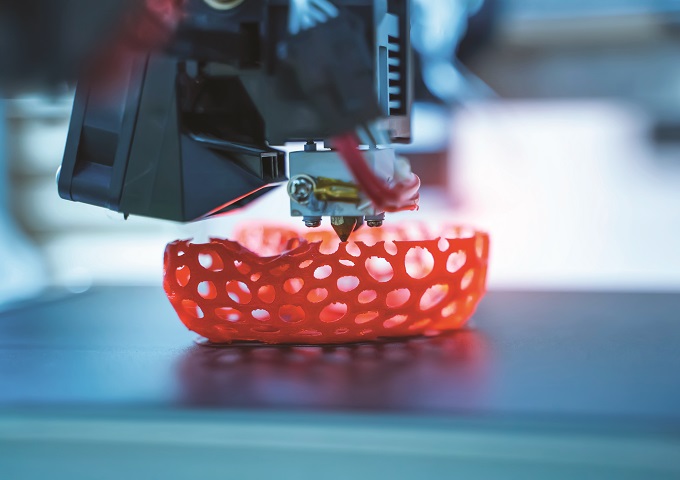This is an expanded and serialised version of the article that first appeared in the JNA January-February 2023 issue.
As JNA enters its fourth decade, it examines the market-shaping developments that will influence the course of the gem and jewellery industry moving forward – from evolving consumer priorities, emerging hubs and business strategies to technological advances, product innovation and the metaverse. Here is the third instalment.
11. Smart manufacturing
Smart manufacturing relies on digital technologies to transform the traditional jewellery production process. Aside from artificial intelligence, smart factories integrate other emerging technology such as Robotic Process Automation to create jewellery. Automation can be extended to companies’ back-office and management systems for a fully digital operation.
Danish jeweller Julie Sandlau is building its first smart jewellery manufacturing facility in Vietnam, in collaboration with FPT Software. Located in Hoa Lac Hi-tech Park in the Hanoi area, the factory is slated for completion by the end of 2023. It will be the brand’s second production facility in Vietnam.
The project will incorporate emerging technology like robotic process automation and artificial intelligence in the jeweller’s production line. For instance, checking of diamonds will no longer be done by hand; it will be carried out by robots. FPT’s automation and robotic processing solutions will also be extended to Julie Sandlau’s operations and work processes such as human resources, operational management and accounting.
12. 3D printing
3D printing is poised to revolutionise jewellery manufacturing in precious metals. While still costly, as economies of scale make prices for powder more competitive, jewellers will be able to bypass common manufacturing challenges to produce innovative pieces.
3D printing allows designers and manufacturers to consider new creative avenues. They can produce more intricate designs or light, fluid and wearable jewellery that would have been challenging to achieve through traditional handcrafting and lost wax casting. They can likewise come up with bigger pieces and quickly bring these to scale.
Austrian brand Boltenstern describes itself as the world’s first to create unique fine jewellery that is coded by hand and crafted by technology. It specialises in 3D printing jewellery in recycled gold, relying on proprietary mathematical algorithms and 3D printing processes to create its light, fine and wearable pieces. Boghossian’s Diaphane Mesh collection, meanwhile, features fluid, fabric-like nets of diamonds and precious gemstones achieved partly through 3D-printed elements.
Significant breakthroughs in additive manufacturing technology and the introduction of more high-resolution desktop models of 3D printers are making the technology more accessible to independent designers and smaller jewellers.
Platinum Guild International (PGI) also sees a bright future for 3D printing of platinum jewellery. The organisation is currently working with industry partners to develop more sources of platinum powder. According to PGI, platinum is ideal for 3D printing due to its low light reflectivity and low heat content activity. 3D-printed platinum items also have double the tensile strength of casted pieces.
13. Online trading platforms for gemstones
Online trading platforms have moved into gemstone territory led by Gembridge and GemCloud. Though coloured gemstones are a much more varied breed than diamonds, technological advances in colour grading and sophisticated functions and logistics aid the digital process.
In the third quarter of 2022, Gembridge saw record-high sales and listings. North American and Asian companies led sales growth, with buyers in the Middle East and Europe driving demand.
14. Digital initiatives for pearls
Pearls were initially not deemed suitable for digital trading as their qualities needed to be viewed in person. Initiatives stemming from pandemic responses proved otherwise. Japanese pearl dealers entertained Chinese buyers that had no qualms over buying goods online. Other pearling hubs likewise conducted business online and will maintain a digital presence despite the return of in-person trading.
Major pearl suppliers such as Jewelmer, Paspaley and Atlas Pearls have set up online auction systems and wholesale portals that provide detailed images and videos of lots. Virtual bidding systems have also been established to complement in-person auctions.
15. Lab-grown diamonds
Demand for lab-grown diamonds (LGDs) has intensified in recent years, with the category firmly establishing its position in the fine jewellery world. Providing full disclosure, independent LGD jewellery brands are weaving modern narratives in the market. Interest from world-famous celebrities and international design houses likewise build consumer confidence in the product category.
Lab-grown diamond jewellery brands such as Smiling Rocks, Rockrush and Fenix Diamonds are expanding their collections and market reach, while LGD producers such as Lumex, Greenlab, Proudest Legend and Ningbo Crysdiam Technology are pushing the envelope on product innovation.
In 2022, Pandora launched its dedicated lab-grown diamond jewellery collection, Pandora Brilliance, in North America, following a pilot run in the UK.
Gemmological laboratories have introduced dedicated certificates and reports for lab-grown diamonds, and trade organisations are setting standards for the sector.
Favourable government policies are set to ensure the competitiveness of the the LGD sector in India, a major producer of HPHT (high-pressure, high-temperature) diamonds. The government has removed the 5 per cent customs duty on LGD seeds and is bolstering local production through five-year research grants to the Indian Institute of Technology.
View the earlier instalments of this series here.









